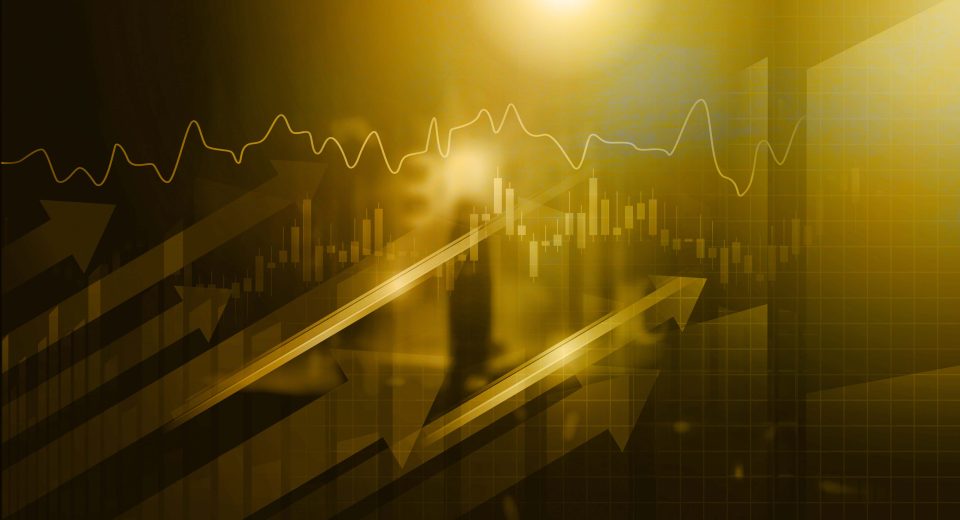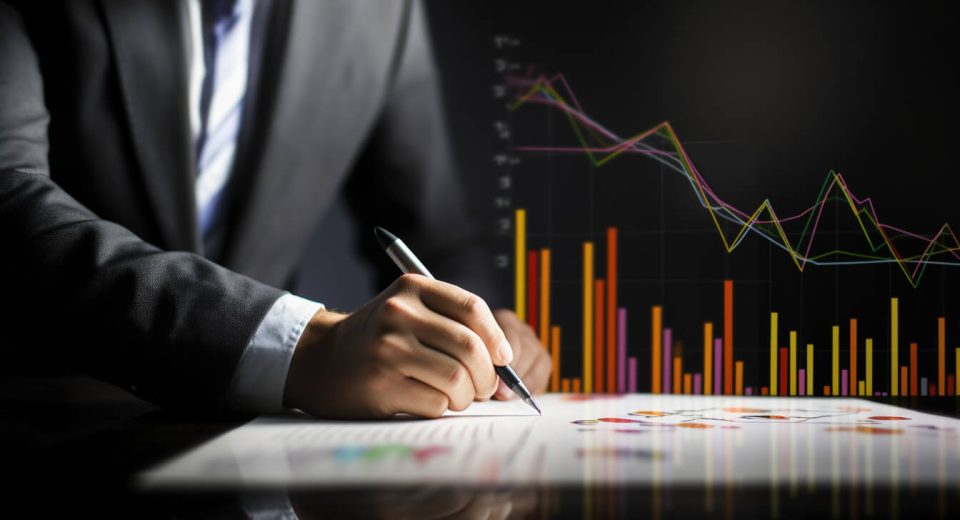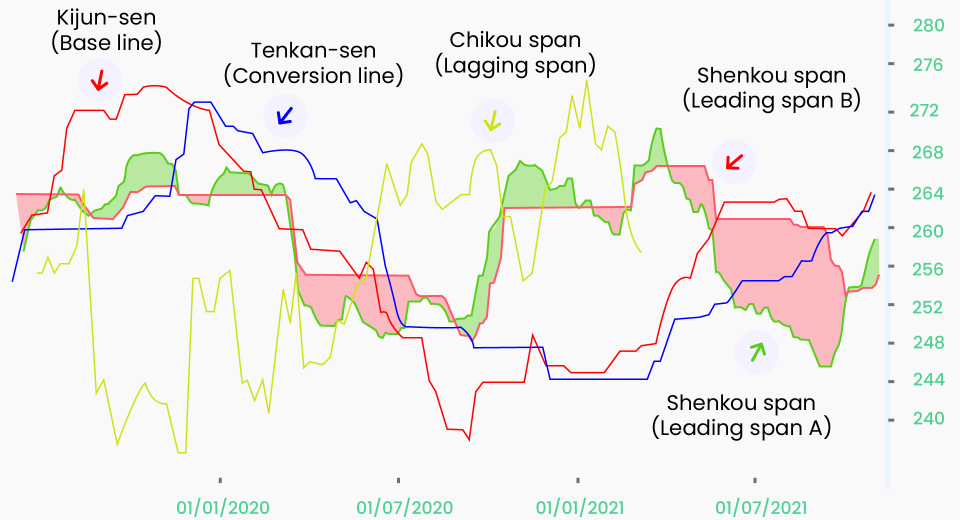Everything You Need to Know About Leverage
Currency prices in forex move constantly but usually in very small amounts. The average daily moves of the most traded pair, the EUR/USD, for example is just 60-100 pips. If you invest with modest funds, then the amount you can make on successful trades will be very low. Leverage offered by brokers is like a loan that allows traders to take larger positions meaning greater profits. Once the deal is closed the ‘loan’ is returned to the broker and the trader keeps the profits. Leverage however not only magnifies wins, it also magnifies losses should the trade move against you.
Leverage is a very powerful tool that when popularly used in forex trading and CFD trading can be very rewarding. Read on to learn all about how leverage can transform a trader’s journey and why it’s important to use it very carefully.
The Basics First
A few terms commonly used when trading with leverage:
Leverage Ratio
Leverage is expressed as a ratio of position value to the capital required. For instance, a leverage of 100:1 implies that a trader can take a position of $1,000 with only $10 from their own funds. The remaining $990 is borrowed from the brokerage.
Borrowing money to get a higher exposure to the chosen assets magnifies the trader’s profit potential. However, leverage works the other way too, as it increases the risk. If the value of the asset moves in an unfavourable direction, the trader not only loses his/her own money but also must return the money borrowed from the brokerage.
Margin
Margin is the minimum capital or account balance that a trader must have to use the leverage offered by the broker. In the above example, a trader must have at least $10 in their trading account, to enjoy the leverage. Often margin has two forms:
Used Margin: This is the security amount that a trader must deposit in their account held at the brokerage to continue with the opened position. The money technically belongs to the trader but can be accessed only after the leveraged positions are closed.
Usable Margin: This is the total capital present in a trading account, which may be much more than the amount required to use leverage for a position.
Did you know?
Using leverage is also known as margin trading or buying on margin.
Margin Call
In case the asset price moves in the opposite direction to what the trader predicted for an extended period, the losses made on the open position may be higher than the account balance or margin requirement. Such a situation triggers what is known as a margin call. It means that the trader is notified by the brokerage to either add more funds into their account or close their open positions.
How is Leverage Determined?
Country regulations determine the maximum leverage that a brokerage operating in the region can offer. For example, as per the 2018 guidelines from the European Central Bank (ECB), the maximum leverage ratio that can be offered to retail traders for CFD trading in the EU is:
30:1 for forex trading on major currency pairs
20:1 for gold trading, major indices, and forex trading on minor currency pairs
10:1 for commodity trading (except gold) and non-major equity indices
5:1 for individual equities
2:1 for cryptocurrency trading
Benefits of Leveraged Trading
- Leverage boosts the funds available to a trader for speculating on the financial markets.
- Leading brokerages offer interest free funds to traders to open bigger positions.
- Leverage magnifies the profit potential, as the profit is earned on the complete trading position and not just the margin invested by the trader.
- This facility allows traders to aim for higher profits even in markets that are stable (have low volatility), as it increases the position size.
- Leverage offers traders access to premium financial markets by reducing entry barriers.
Risks of Leveraged Trading
- Leverage not only magnifies the profit potential, but also the risk. If price movements in a market are unfavourable, a trader will make greater losses by buying with margin than by using only their own capital. This is why risk management is even more important when trading with leverage.
- Margin call risks occur when the used margin falls short of the floating loss. Brokerages may automatically close all open positions to prevent traders from piling up losses.
How Does Leverage Work?
When trading with leverage, traders put in only a fraction of the actual value of the trade. The rest is provided by the brokerage. Let’s say a trader wishes to buy a stock that is worth $2,000. The broker offers leverage of 5:1 for this stock. This means the trader will need to pay only $400 to own this stock, by borrowing the remaining $1,600 from the brokerage. If the minimum margin requirement is 20%, the trader will need to hold $400 in their trading account to open the position.
If the trader’s has $1,000 in the trading account, $400 is the used margin and $600 is the usable margin.
Leverage in Action
Let’s assume that the price of the stock rises from $2,000 to $2,800.
- Without leverage, the trader would have invested $2,000 and made a profit of $800 on the trade ($2,800-$2,000). This represents a profit of 40%.
- With leverage, the trader invested only $400 but still made a profit of $800. This represents a profit of 200%.
With leveraged trading, when the trader sells the stock for $2,800, the $2,000 borrowed from the brokerage needs to be returned.
The Downside to Using Leverage
Let’s consider the scenario in which the asset price falls instead of rising. Let’s say the stock price falls from $2,000 to $1,800.
- Without leverage, the trader would have invested $2,000 and made a loss of $200 on the trade ($2,000-$1,800). This represents a loss of 10%.
- With leverage, even when the trade is unfavourable, the trader still needs to return the funds borrowed from the brokerage. So, the trader must bear the complete loss of $200. This represents a loss of 100%.
How to Trade with Leverage?
Leverage trading is a powerful tool to increase exposure and grow the trading portfolio. it is also the most popular way of accessing some markets that would otherwise have been inaccessible to retail traders. Here are some tips on how to use leverage wisely:
- It’s important for new traders to begin with low leverage. They can always increase the leverage as they gain knowledge and confidence.
- Leverage trading must be accompanied by proper and thorough risk management. This includes opening stop loss and take profit orders with every position. Some traders also use trailing stop loss in trending markets.
- Traders must make calculations to know if they can afford to take on the magnified risk.
- Experts suggest creating a well-diversified portfolio, so that some are winning trades and support the capital in the trading account to avoid margin calls.
- A good practice is to set a custom alert, which sends a notification well above the margin call and the trader can decide whether to continue with the position or abandon the trade.
- Traders must monitor the positions that they have opened with high leverage.
- Practising on a demo account before trading with leverage in live markets allows traders to use a stronger trading strategy and effective risk management.
To Sum Up
- Leverage multiplies the trader’s buying power, enabling them to explore more opportunities in the financial markets.
- Margin is the minimum capital required in a trader’s account for leveraged trading.
- A margin call signals that the value of the trader’s holdings is depleting and action in that respect is required.
- It’s important to begin with low leverage and practise on a demo account before buying with margin in the live markets.
Disclaimer:
All data, information and materials are published and provided “as is” solely for informational purposes only, and is not intended nor should be considered, in any way, as investment advice, recommendations, and/or suggestions for performing any actions with financial instruments. The information and opinions presented do not take into account any particular individual’s investment objectives, financial situation or needs, and hence does not constitute as an advice or a recommendation with respect to any investment product. All investors should seek advice from certified financial advisors based on their unique situation before making any investment decisions in accordance to their personal risk appetite. Blackwell Global endeavours to ensure that the information provided is complete and correct, but make no representation as to the actuality, accuracy or completeness of the information. Information, data and opinions may change without notice and Blackwell Global is not obliged to update on the changes. The opinions and views expressed are solely those of the authors and analysts and do not necessarily represent that of Blackwell Global or its management, shareholders, and affiliates. Any projections or views of the market provided may not prove to be accurate. Past performance is not necessarily an indicative of future performance. Blackwell Global assumes no liability for any loss arising directly or indirectly from use of or reliance on such information herein contained. Reproduction of this information, in whole or in part, is not permitted.





